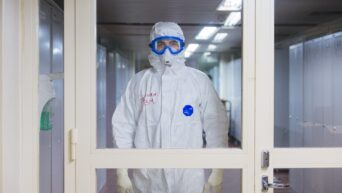Without even knowing it, we are consuming bits of plastic too small to see in the air that we breathe.
A team of researchers from various universities estimated that the average American consumes more than 70,000 microplastic particles a year. That number rises for people who drink only bottled water. An additional 90,000 particles could be consumed each year. Microplastics have been found all over the world, even in mosquitoes’ stomachs. But where are all these particles coming from?
When plastic waste in landfills and oceans break down, tiny particles are created. Plastic breaks down in the water when exposed to light and wave action. If you wear clothes made of nylon or other types of plastic, you are shedding each time they are washed. Plastic lint can be carried into rivers and oceans once wash water has been sent down the drain. Once that happens, any sea creature could consume it.
The goal of the study was to try to understand how much plastic the environment is putting into us in proportion to how much plastic we are putting into the environment. When coming up with an average of 70,000 particles a year, researchers only considered 15 percent of Americans’ caloric intake. As a result, 70,000 could be a drastic underestimate.
Since plastics are made from many different chemicals, scientists have reason to be worried about the effects of consuming these plastics. Ingredients in plastic such as Polyvinyl chloride and Phthalates have been known to cause cancer. These chemicals are used to mimic hormones found in the human body, which can trigger changes in the growth of cells and their development.
The fear is that there has not been enough data to prove the harmful effects of inhaling microplastics. We could be breathing these microfibers into our lungs, and it is not currently known how long they stay there.
For now, try to be mindful of how much plastic enters or moves near your mouth on a regular basis.

































